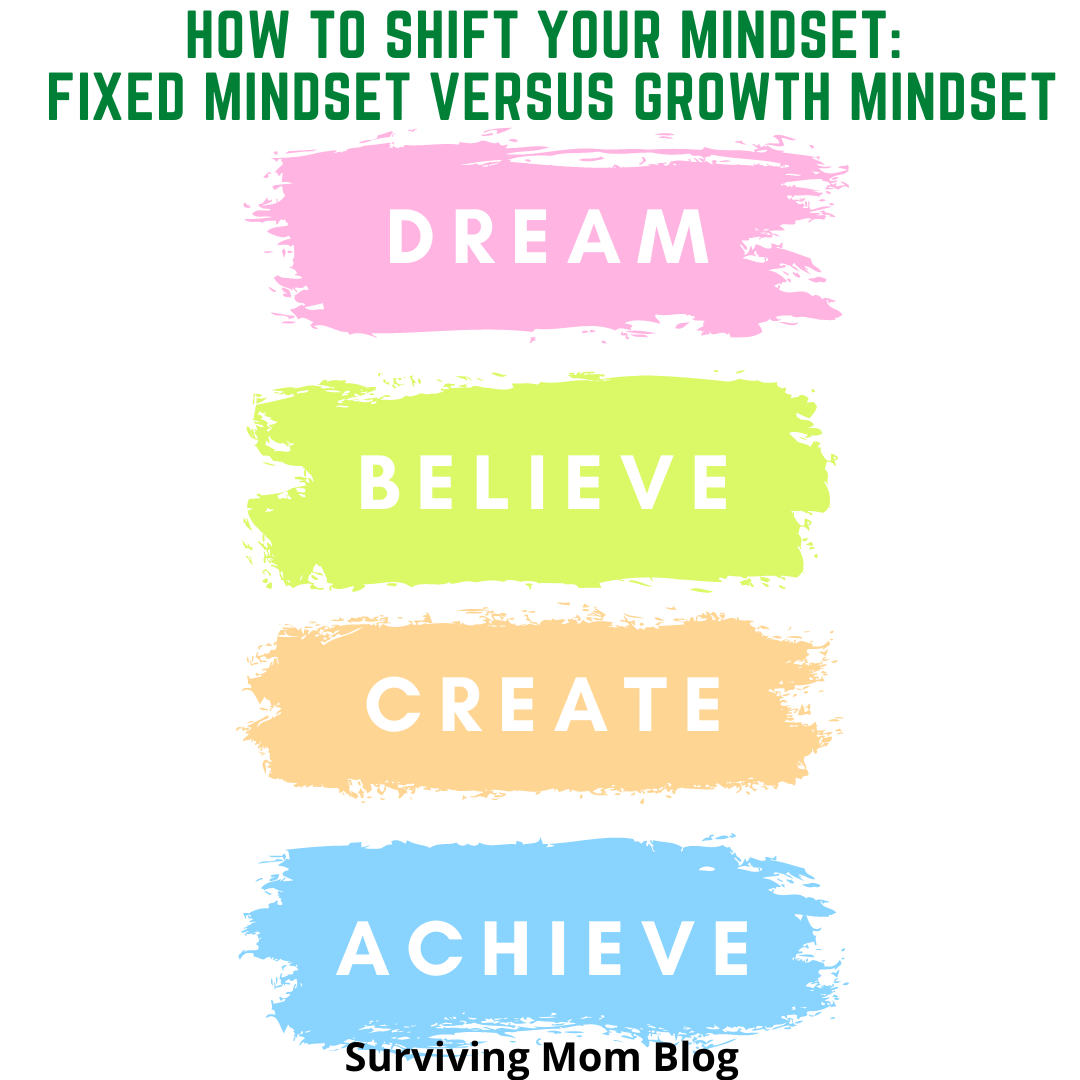
Our mindset determines how we view the world. It is through this lens that our thoughts, behaviors, careers, ambitions, and relationships with others are shaped. Our mindset will ultimately determine our life choices. Our mindsets are either known as fixed or growth. Fixed mindsets and growth mindsets will be explained in this article, as well as strategies to shift to a growth mindset in both adults and children.
UNDERSTANDING THE DIFFERENCE BETWEEN A Fixed Mindset and Growth Mindset
The concept of fixed mindset and growth mindset was first researched by psychologist Carol Dweck in 2006. She determined that these mindsets are formed very early in life.
Those with fixed mindset believe that intelligence and abilities are static. They feel that effort will not improve their mental skills or any other types of skills. They therefore don’t exert extra effort. The focus of those with this mindset is result oriented as opposed to progress oriented. If there is a skill that is lacking, they will avoid that skill and often feel ashamed about it. They try to always appear intelligent because they see failure as a lack of intelligence. They are not receptive to constructive criticism because of a belief that no good can come from it. They are also threatened by others’ success.
When you have a fixed mindset, you believe that your traits cannot be modified. Therefore, it is pointless to take any risks or try new things. People with this mindset often find themselves “stuck” because they do not believe they are able to improve their life circumstances. As a result, they do not reach their full potential. They are unwilling to put in the work to improve their quality of life and their relationship with others because they don’t see the purpose in doing so.
Those with a growth mindset view the world in a completely different way.
They believe that intelligence is something that can grow with effort, learning, and perseverance. Those with this mindset believe that your traits and behaviors can change. They embrace learning a new skill, trying a new thing, or taking a chance because they believe in personal and professional growth. They focus more on effort as opposed to results because results aren’t permanent. They are also more receptive to constructive criticism because it is an opportunity to learn more about themselves and gain additional insight.
People with growth mindset believe their potential is endless because they continue to work on themselves. They will find inspiration and encouragement from the success of others. They will continue to work towards goals, while valuing hard work and progress. People with this mindset are more likely to challenge themselves in every aspect of their lives because they feel that growth is possible.
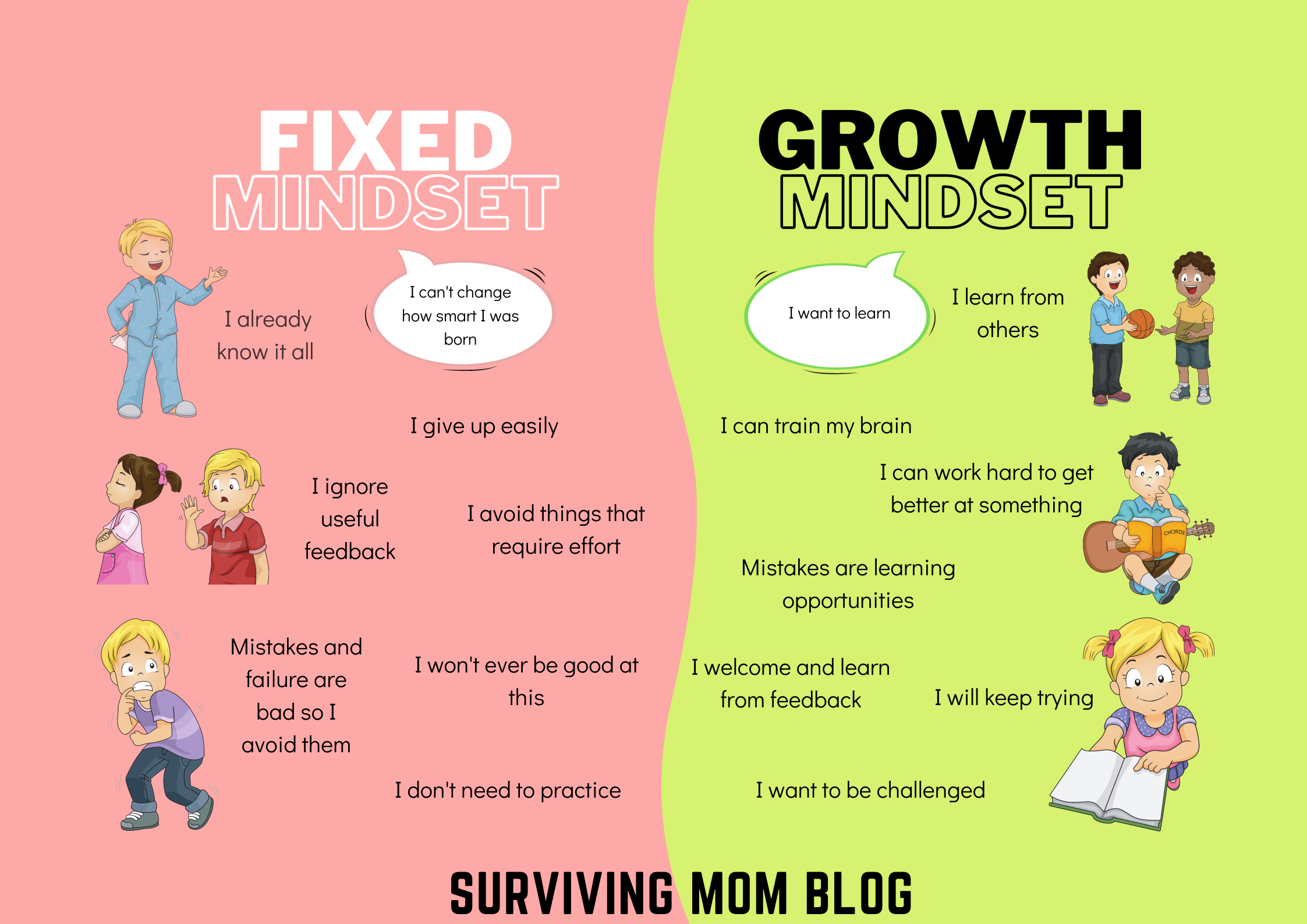
It is important to note that children with fixed mindsets prefer to do the things they already know how to do. They don’t want to put in the effort to learn new things because they feel their challenges indicate a lack of intelligence. They are also more likely to lie about their performance because they measure intelligence in the form of results.
Children with growth mindsets are open to challenges because they see them as opportunities to learn new things and increase their intelligence. They will continue to put in the effort and learn things that are difficult for them. Children with growth mindsets believe success is possible with continued effort. They may be disappointed if they get a bad grade, but they will bounce back and keep working at it.
STRATEGIES TO SHIFT YOUR MINDSET IN ADULTS AND CHILDREN
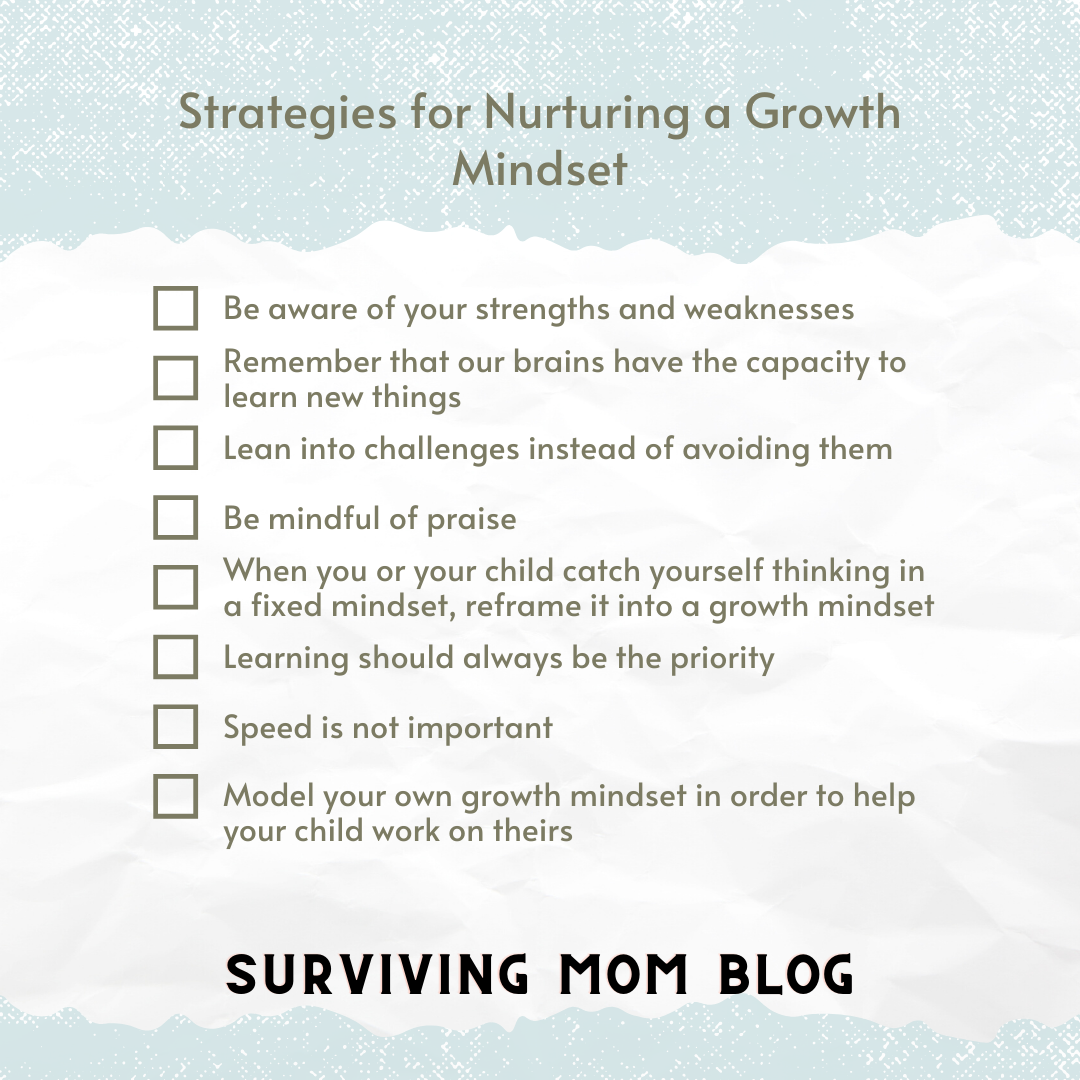
The above information has demonstrated the advantages of a growth mindset. The good news is that someone with a fixed mindset can change their mindset to a growth mindset. If you or your child have a fixed mindset, use the following strategies:
(1) Be aware of your strengths and weaknesses
It is important to recognize that none of us are great at everything. We are not perfect, and each of us have areas of weakness (developgoodhabits.com, 2020).
(A) Discuss or list your weaknesses and strengths. Then pick one weakness that you or your child would like to work on. Look at those weaknesses with curiosity as opposed to judgment. For example, if you are always late, figure out what is the cause. Are you not giving yourself enough time to get ready or are you getting distracted and doing something else that prevents you from staying on course? Brainstorm on ways to grow in this area.
(B) Remember that weaknesses are opportunities for improvement. Setting goals should be about embracing growth rather than results. There are times that as hard as we try, we are just not going to be great at something. It is okay and inevitable. Remember that the effort is what matters. Try to learn from your weaknesses as opposed to seeing it as a waste of time. For example, I am not a great drawer. With practice I have gone from awful to mediocre. Despite my best efforts, I am never going to be Thomas Kinkaid. However, I will still draw with my daughter, and I enjoy it tremendously. I have learned that doing things from the heart is what makes my drawing beautiful.
(C) Flaws should be seen as part of what makes us human – just as freckles or a mole are not indications of failure, neither are our flaws. Flaws are not to be seen as ugly or feared.
(2) Remember that our brains have the capacity to learn new things
(A)Tell yourself or your child repeatedly that our brains can get stronger, just like a muscle. Whenever you or your child feels discouraged about something that is difficult, remember that our brains have the capacity to learn, and we can form and strengthen neural connections which make us smarter (mindsethealth.com, 2020). Learning throughout life allows your brain to form new connections throughout life.
(B) For a child, give the analogy of how our brain is full of lightbulbs and every time we try something new, a new lightbulb gets turned on. The more we work at a particular skill, regardless of outcome, the brighter the lightbulb will shine. This makes your brain stronger. If you don’t try new things, the lightbulb for that skill will never turn on (mother.ly, 2020).
(3) Lean into challenges and risks instead of avoiding them
(A)When you or your child continue to work on a difficult task, acknowledge it. Give yourself a pat on the back for trying something challenging, and tell your child that you notice that they are working hard.
(B) When something challenging presents itself, view it as an opportunity to learn and grow.
(C) It is okay to feel fear about a new situation or challenge, but remember that trying new things and taking risks allows us to learn new things about ourselves.
(D) Teach your child what “grit” means and remember the importance of grit when facing challenges. Growth requires perseverance, resilience, and determination (positive psychology.com, 2021).
(4) Be mindful of praise
(A) Praise should be given for a specific action, not given as a generalization. For example, praise your child for how clever it was to try different ways to solve a puzzle rather than saying your child is clever.
(B) Whatever the outcome might be, make sure to focus on the effort rather than the outcome. If your child studies really hard for a test, whatever the grade may be, make sure to give praise for the amount of hard work as opposed to the result. Perfection is not the goal. For example, if your child studies really hard, but never does well in chemistry, praise him for how hard he tried. Likewise, if you try a new skill and it doesn’t work out the way you wanted it to, focus on how hard you worked at this new skill (psychologytoday.com, 2020)
(C) Praise yourself and your child for using this new mindset. Remember to cheer yourself and others on when they grow.
(5) When you or your child catch yourself thinking in a fixed mindset, reframe it into a growth mindset
(A) Remember that learning new things and facing challenges won’t result in immediate outcomes. It takes time to learn and improve ourselves.
(B) When you feel discouraged or find yourself falling back into your old way of thinking, take the time to acknowledge that this is your fixed mindset. Then challenge that way of thinking using a growth perspective (For example, This is hard, but I am going to give it a try, trying new things helps me grow, practicing helps me get better at something). (positive psychology.com, 2021).
(C) Replace judgment with compassion and acceptance– instead of seeing your lack of success as a failure, remember that you are learning.
(D) “Yet” is a powerful word, and helps us shift our mindset. If you or your child have not accomplished something, remember to include the word “yet”. This allows room for growth. For example, “You haven’t figured out how to build the tower yet.”
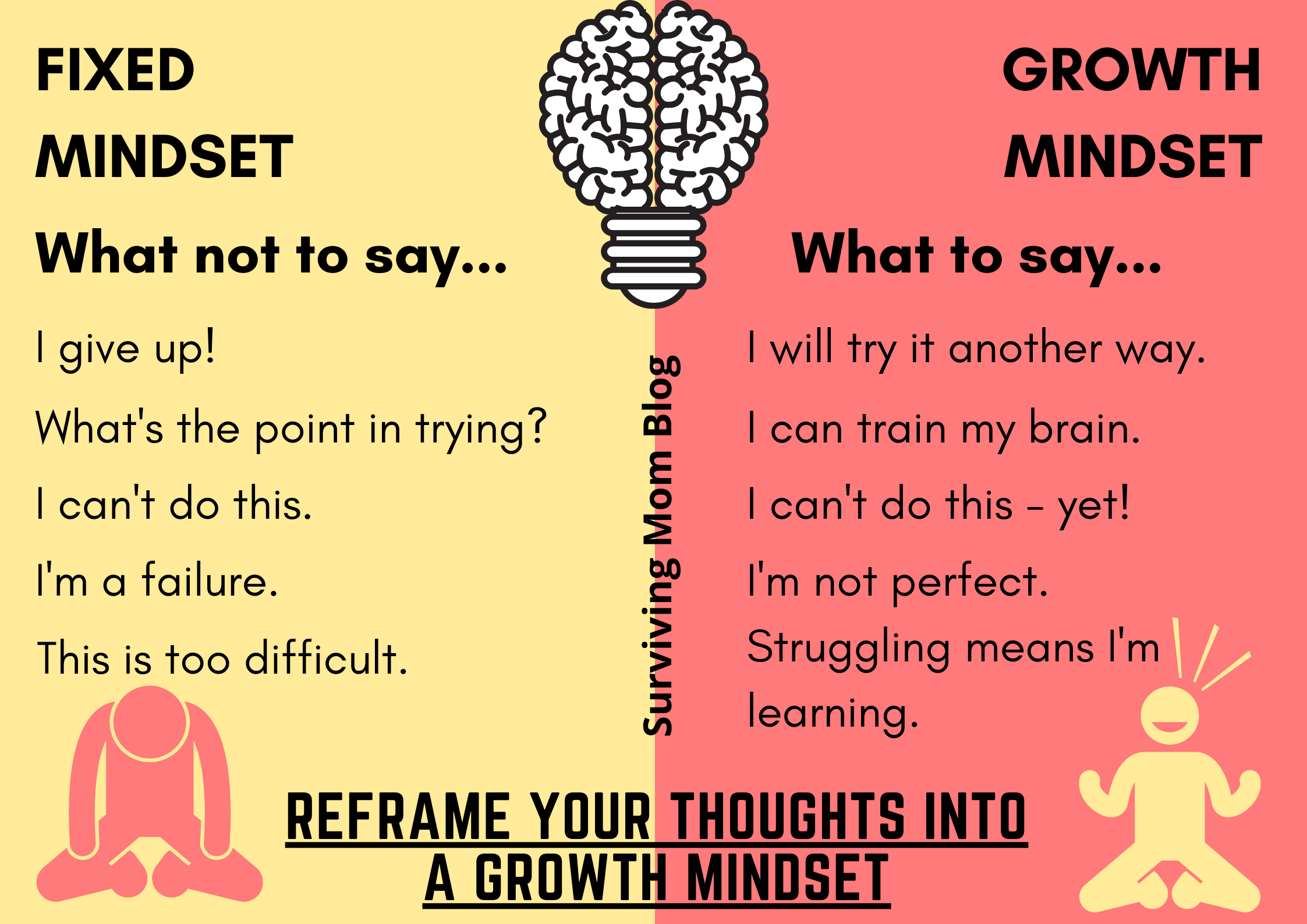
(6) Learning should always be the priority
(A) Figure out what you/your child’s learning style is (visual, auditory, kinesthetic, combination) and use that style to learn new things. However, be open to learning in new and different ways, as there isn’t a one-size-fits-all method to learning (developgoodhabits.com, 2020).
(B) View constructive criticism as an opportunity to learn, and be receptive to what others are saying.
(C) Remember that areas that need improvement simply means you are still learning them.
(D) Take time everyday to think over the things you have learned and the opportunities you took or can take in the future.
(E) When others succeed, see their success as an indication of the ability to learn. When others make mistakes, see it as a reminder that we are all imperfect and forever learning. In both instances, reflect on what they did or could have done differently, and use it as motivation for your own learning journey.
(F) View learning as a continuous way of training your brain. When we have nothing to learn, our minds cannot grow.
(G) Each time you or your child accomplishes a goal, seek out a new one. This allows continuous learning.
(H) It takes time to learn, and you and your child must be mindful of that to prevent falling back into a fixed mindset. As a result, give kids space to figure things out for themselves. Part of the learning process is to make mistakes and be unsuccessful. Those with a growth mindset understand that trial and error allows us to learn.
(7) Speed is not important
Remember that it is the journey that matters as opposed to the destination. It is okay if it takes longer to develop a new skill, but the important thing is to try our best as opposed to accomplishing something as quickly as possible (positive psychology.com, 2021).
(8) Model your own growth mindset in order to help your child work on theirs
It is important that you develop a growth mindset if you don’t already have one. This is necessary to set the right example for your children. It is okay if you have setbacks. Use them as opportunities to catch yourself and point out to your child how you reframe your thinking. Using and modeling these strategies helps your child to do the same (mother.ly, 2020).
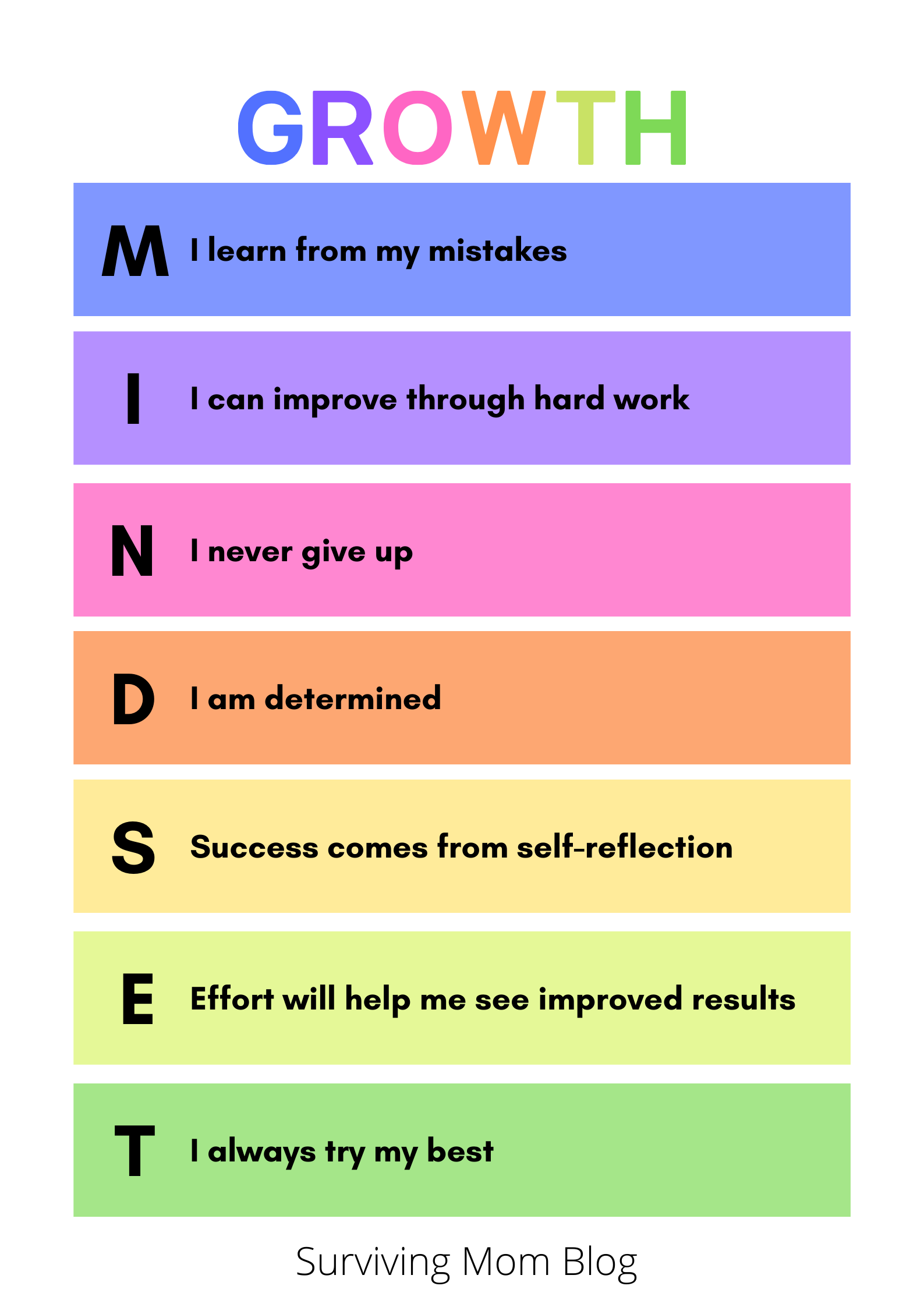
A growth mindset isn’t born overnight, and it won’t happen overnight. However, with time and practice you can change your mindset into one of growth. Learning and growing as a person and in all aspects of your life allows endless opportunities. The sky is the limit for you and for your child when you view life through a growth mindset.
Disclaimer
This post may contain affiliate links. If you purchase a product via my link I may receive a small commission at no additional cost to you. Please visit our disclaimers here




Naomi P Lane says:
This whole framework and colorful visual is a good tool for helping kids overcome negative self-talk. A lot of children have difficulty shifting into this growth mindset, especially when they are constantly comparing themselves to others in a classroom. It is hard to take speed out of the equation when they see others finishing their work faster in a set time period. This is why timed tests can be really deadly for self-esteem. Thankfully, when I retired a couple of years ago, our school had already acknowledged that some kids in every class may need a second session to complete any test and this was allowed. Schools (in British Columbia) are definitely shifting to a growth mindset by creating supportive conditions for all learners. This is the opposite of school funding via test scores, which seems to be prevalent in the U.S.
Randi says:
I agree completely that timed tests are not the way to go. It only adds to performance anxiety and negatively impacts self-esteem. It also encourages a fixed mindset because of the emphasis on speed. I didn’t know that schools in British Columbia were giving kids second sessions for tests. That’s wonderful that they are trying to shift to a growth mindset. It is certainly a challenge in the U.S. to get proper support for all learning styles, which is why I currently homeschool my daughter. Thank you for your feedback!
Emily says:
Growth mindset is key. It is so vital to have this, thank you!
Randi says:
Thank you for your support and feedback, Emily!